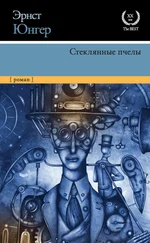“Stereoscopic perception” has a technical meaning for Jünger. In The Adventurous Heart , he noted that it involved “extracting two sensual qualities from one and the same object, through—and this is essential—the same sense organ.” [55] Ernst Jünger, Sämtliche Werke , 9:83.
One sense organ has to take over a function of another. Thus, a red, fragrant carnation is not stereoscopic as it involves merely sight and smell separately. But a velvet carnation that emits the fragrance of cinnamon is stereoscopic because the nose both smells and tastes the qualities of spice simultaneously. The device has roots in French decadence and symbolism, as evidenced by repeated occurrences in the poems of Arthur Rimbaud and Charles Baudelaire. Jünger may have possessed synesthesia, or at least was able to create it poetically, by separating and mixing different sensory qualities in an object. “I thought I was seeing sounds that no painter had ever observed,” he wrote in an entry on 9 April 1942.
In the Paris Diaries , Jünger’s recollection of his dreams, as well as his zoological observations and recurrent descriptions of long walks and visits to cemeteries, parks, libraries, bookstores, antiquarian shops, galleries, and museums of Paris, partake of some of the same magical-realist method. [56] See, for example, his descriptions from the Jardin d’Acclimatation, a park on the northern edge of the Bois de Boulogne, which until 1931 exhibited foreign peoples, mainly Africans, in a kind of “human zoo,” but by the time Jünger visited only animals were on display (Jünger, First Paris Journal , Paris, 16 September 1942).
The diaries, one must add, are meant to be actual descriptions of events, not phantasmagoria. Jünger’s analogies are imaginative, but in these pages usually not technically “stereoscopic,” such as when he compares receiving a typhus vaccination to Holy Communion. [57] Jünger, Notes from the Caucasus , Voroshilovsk, 26 November 1942.
The method is stereoscopic in a broader sense, the way Jünger described, in an essay from the 1930s, the magical effect of perceiving a man’s face on a brightly lit moon. [58] See Ernst Jünger, “Sicilian Letter to the Man in the Moon,” in Jünger, The Adventurous Heart , 121–130.
As Jünger explains, “the real is just as magical as the magical is real” [59] Jünger, “Sicilian Letter,” 130.
—or to put it another way, the enchanted and the mundane are stereoscopically equal and present in Jünger’s optics.
3. Form: Désinvolture
A key term Jünger borrowed from the French was “désinvolture ,” the casual and innocent observation of actuality from a distance, which embraces the Heraclitian flux, the “innocence of becoming” of all things that come in and out of existence, beyond good and evil. [60] I borrow here the term “ Unschuld des Werdens ” (innocence of becoming) from the title given by Alfred Bäumler to a collection of some of Nietzsche’s unpublished works. See Die Unschuld des Werdens: Der Nachlass, ausgewählt und geordnet von Alfred Baeumler (Leipzig: Kröner, 1931). Although Bäumler was a prominent advocate of aligning Nietzsche’s philosophy with National Socialism, the phrase cogently captures an essential characteristic of Nietzsche’s attempt to reverse early modern pessimism, as well as Jünger’s notion of Heiterkeit (a combination of serenity and cheerfulness). Jünger of course breaks with Nietzsche by embracing multiple levels of reality below the surface of visual perception, a notion that Nietzsche scoffed at as a Platonic illusion. See Jünger, First Paris Journal , Paris, 7 January 1942 and 10 March 1942.
In the harsh environment of the two wars, the applied method enabled Jünger to keep an emotional distance from the horrors he experienced and translate them into objective descriptions.
For Jünger there is no single mode of consciousness but rather multiple layers of experience, which must be uncovered below the Veil of Maya, the surface illusions of reality. For that reason, he was fascinated by hallucinatory substances. In the war journals, he refers to the effects of ether in an essay by de Maupassant on 17 September 1942 and to the Veil of Maya on 2 October 1942. In the 1920s, Jünger had an intense interest in hallucinogenic drugs, magic, and the supernatural. [61] Jünger, First Paris Journal , Paris, 8 October 1942.
In the early 1950s, Jünger would experiment under medical supervision with LSD with Albert Hoffman, its inventor. He dedicated an entire book, Annäherungen: Drogen und Rausch ( Encounters: Drugs and Intoxication ) to the subject, which was published in 1970.
REENCHANTMENT OF THE WORLD
In 1995 on Jünger’s hundredth birthday, his friends contributed to a collection of essays under the title The Magic of Serenity . [62] Günter Figal and Heimo Schwilk, Die Magie der Heiterket: Ernst Jünger zum Hundertsten (Stuttgart: Klett-Cotta, 1995).
For the editors, Jünger’s work was so valuable because it demonstrated that “one can only understand one’s own time when one is not captivated by it” ( wenn man sich ihr nicht ausliefert ). [63] Figal and Schwilk, Die Magie der Heiterket , 7.
Both Jünger’s many admirers and his equally numerous critics recognize this attribute. For the former, Jünger’s distance to the events of his time and his familiarity with the occult traditions of occidental culture are an admirable antidote to the sicknesses of modernity, resisting ecological destruction, the loss of the sacred, unfettered consumerism, and the triumph of instrumental reason. For the latter, Jünger’s ambivalence about modern culture, his cold gaze, renders his Olympian stance suspicious, or worse, reactionary. Both sides in this long simmering feud fail to grasp that Jünger’s optics are informed much more by epistemology than politics. Although fully alert to the scientific and technological revolutions around him, Jünger’s aesthetic sensitivities were self-consciously old-fashioned—with the one exception of modern art, which fascinated him and led to friendships with avant-garde artists such as Picasso and Alfred Kubin. [64] I am indebted to Eliah Bures for this observation.
One notices immediately when reading the war journals that the predominant books Jünger collected and read were published before his own era. He sought to rehabilitate an older version of science, organic and holistic, without jettisoning the value of scientific rigor.
In sum, Jünger was concerned with reversing Max Weber’s diagnosis of modernity as an iron cage, and he attempted to open doors for a reenchantment of the world, seeing, writing, and relating to reality in a way that supersedes the “modern.” Not unlike Heidegger and Nietzsche, who pined for the pre-Socratics, Jünger sought to recover the supposed epistemological primordial relationship to being as “awe,” which was closed off with the advent of abstract-rational thinking. Like another Nietzschean, Michel Foucault, who foresaw the eclipse of the modern episteme and the consequent “death of man,” Jünger conceived of modernity as a passing epoch, a cognitive horizon bound, one day, to yield to a return of new mythologies. The word “antimodern” fails to describe his fundamental project. An “alternate” or transcended modernity, in contrast to the flabby phrase “postmodernity,” better hits the mark. [65] Richard Herzinger in this context coined the phrase “ Übermoderne ,” a deeper version of postmodernity. See “Werden wir alle Jünger?” Kursbuch 122 (December 1995): 93–117.
Читать дальше

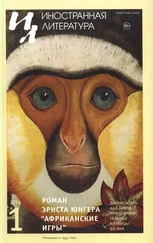



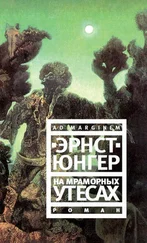

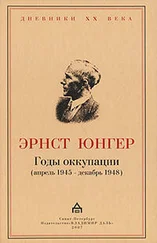
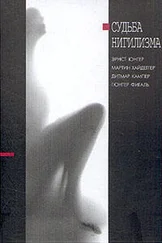
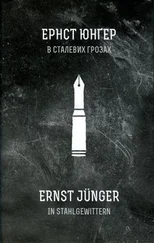
![Эрнст Юнгер - Стеклянные пчелы [litres]](/books/410842/ernst-yunger-steklyannye-pchely-litres-thumb.webp)
